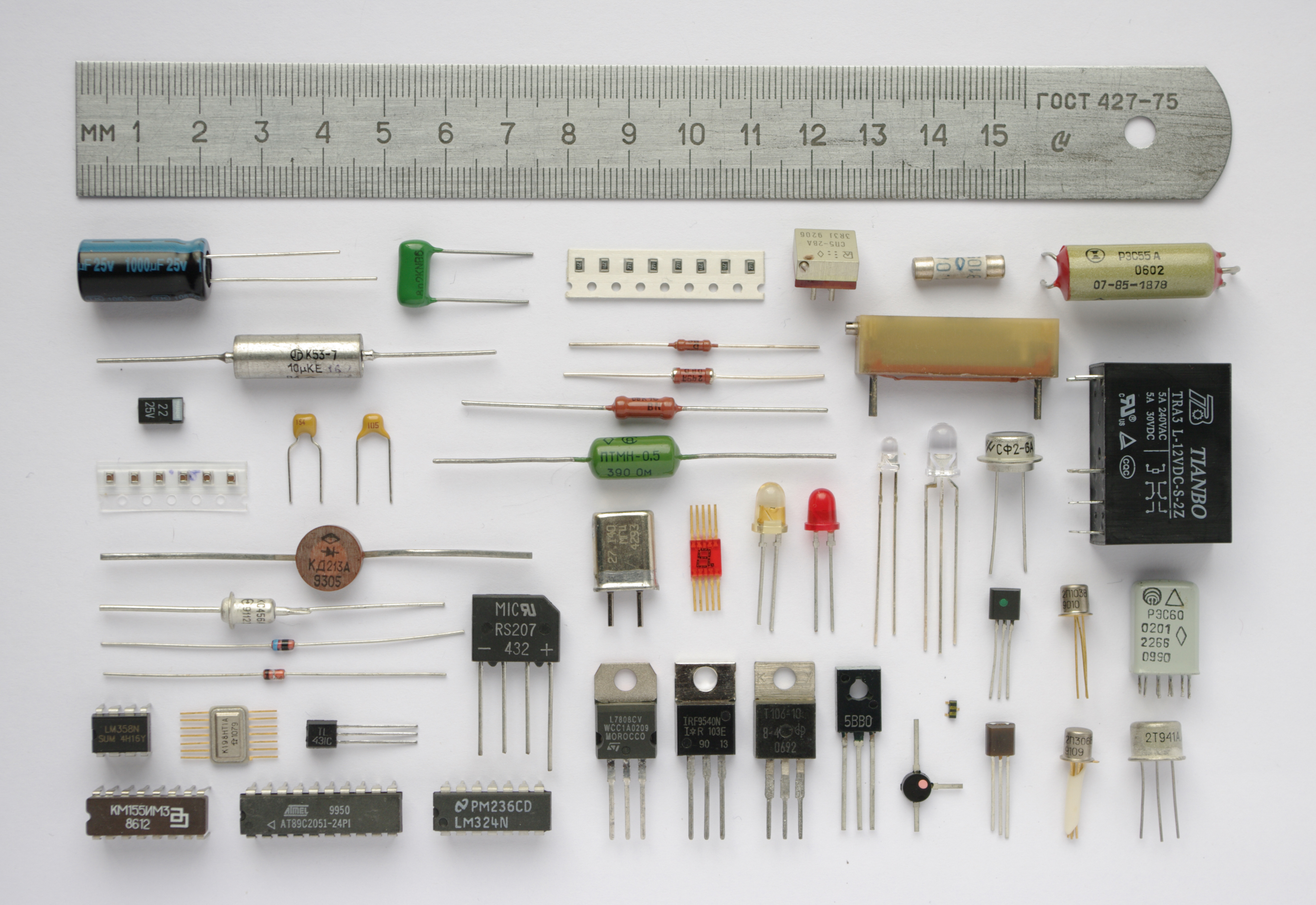Abstract
Before we can start to create our first microcontroller project we need to understand a few basic components, and how to read a circuit diagram.
So we will learn about some of the basic building blocks of electronics before we use them to make a simple circuit.
Electronic Components
The picture above comes from the page Electronic Components on Wikipedia. This is a good over view of some components used in experiments.
A few sources for Electronic component info
An electronic component is any basic discrete device or physical entity in an electronic system used to affect electrons or their associated fields. Electronic components are mostly industrial products, available in a singular form and are not to be confused with electrical elements, which are conceptual abstractions representing idealized electronic components.
Electronic components have two or more electrical terminals (or leads). These leads connect, usually soldered to a printed circuit board, to create an electronic circuit (a discrete circuit) with a particular function (for example an amplifier, radio receiver, or oscillator). Basic electronic components may be packaged discretely, as arrays or networks of like components, or integrated inside of packages such as semiconductor integrated circuits, hybrid integrated circuits, or thick film devices.
Electronic Circuit Engineering - Introduction
On these pages, I introduce basic knowledge about making circuits using electronic parts, such as ICs, transistors, resistors, capacitors, and so on.
Mainly, I am introducing the ways in which I use these parts.
BASIC ELECTRONICS COMPONENTS TUTORIAL FOR ROBOTS
Electronics can at first seem extremely complicated to understand and learn. One look at a circuit board with all those little blinky LED’s and black chips and unidentifiable circle pointy things can make anyone quit before starting.
How to read a Circuit Diagram
Skill Set: Reading circuit diagrams
Circuit diagrams, aka schematics, are line drawings that show how a circuits components are connected together. They serve as a map or plan for assembling electronics projects, and they are easy to read far easier than understanding how the circuits they describe actually work. This is an important point: You can read and successfully build from a schematic diagram without understanding the circuit.
This page was created in response to all the email I receive, on how to read a schematic. Learning to read a schematic diagram, is similar to map reading. You need to know which wires connect to which component and where each wire starts and finishes. With a map book this would be equivalent to knowing your origin and destination points and which roads connect to the motorway network, etc. However schematics are a little more complicated as components need to be identified and some are polarity conscious (must be wired up in the circuit the correct way round) in order to work. You do not need to understand what the circuit does, or how it works, in order to read it, but you do need to correctly interpret the schematic. Here are some basic rules that will help with reading a diagram.
Linux Tool for Circuit Design
There are drawing programs, and there are schematic capture programs. All schematic capture programs will produce output for inclusion in publications. However, these programs have different goals, and it shows. Rarely is the output of a schematic capture program really suitable for publication; often it is not even readable, or cannot be scaled. Engineers who really want to have a useful schematic drawing of a circuit usually redraw the circuit in a general drawing program, which can be both tedious and prone to introducing new errors.
Welcome to XCircuit, the open-source circuit drawing and schematic capture program written by Tim Edwards.
Written by John F. Moore
Last Revised: Tue 01 Sep 2020 08:10:07 PM EDT

This work is licensed under a Creative Commons Attribution-NonCommercial-ShareAlike 3.0 Unported License.

